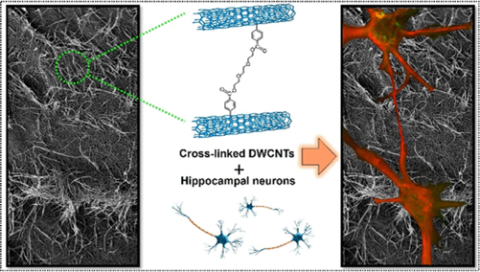In the past two decades, important results have been obtained on the application of carbon nanotubes (CNTs) as components of smart interfaces promoting neuronal growth and differentiation. Different forms of CNTs have been employed as scaffolds, including raw CNTs and functionalized CNTs, characterized by a different number of walls, mainly single-walled CNTs (SWCNTs) or multiwalled CNTs (MWCNTs). However, double-walled carbon nanotubes (DWCNTs), which present interesting electronic and transport properties, have barely been studied in the field. Apart from the electrical conductivity, the morphology, shape, porosity, and corresponding mechanical properties of the scaffold material are important parameters when dealing with neuronal cells. Thus, the presence of open porous and interconnected networks is essential for cell growth and differentiation. Here, we present an easy methodology to prepare porous self-standing and electrically conductive DWCNT-based scaffolds and study the growth of neuro/glial networks and their synaptic activity. A cross-linking approach with triethylene glycol (TEG) derivatives is applied to improve the tensile performance of the scaffolds while neuronal growth and differentiation are promoted. By testing different DWCNT-based constructs, we confirm that the manufactured structures guarantee a biocompatible scaffold, while favoring the design of artificial networks with high complexity.

